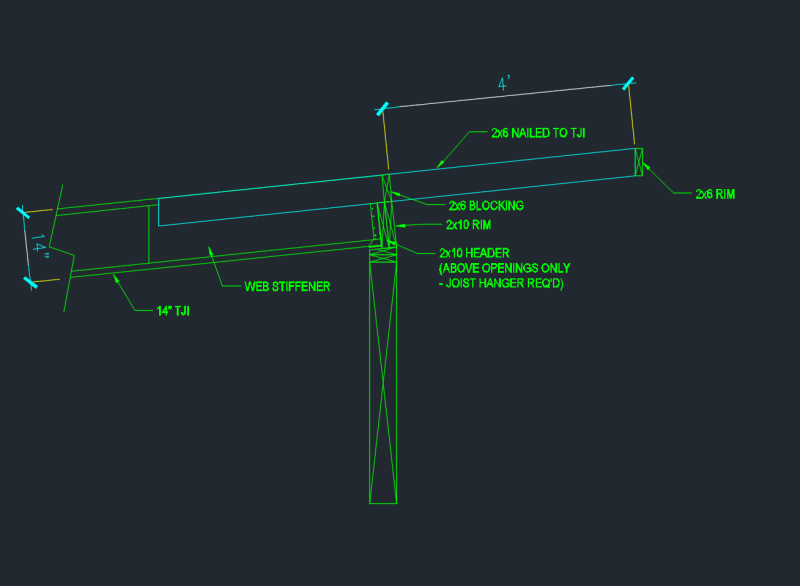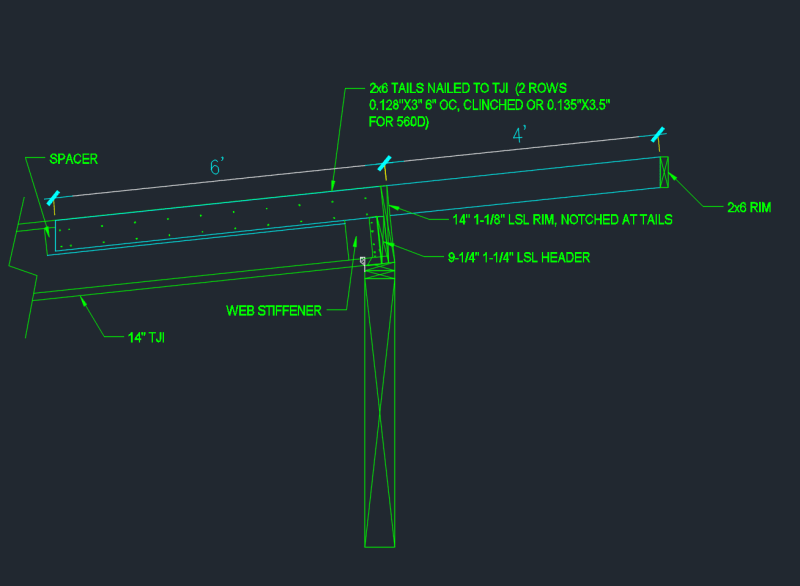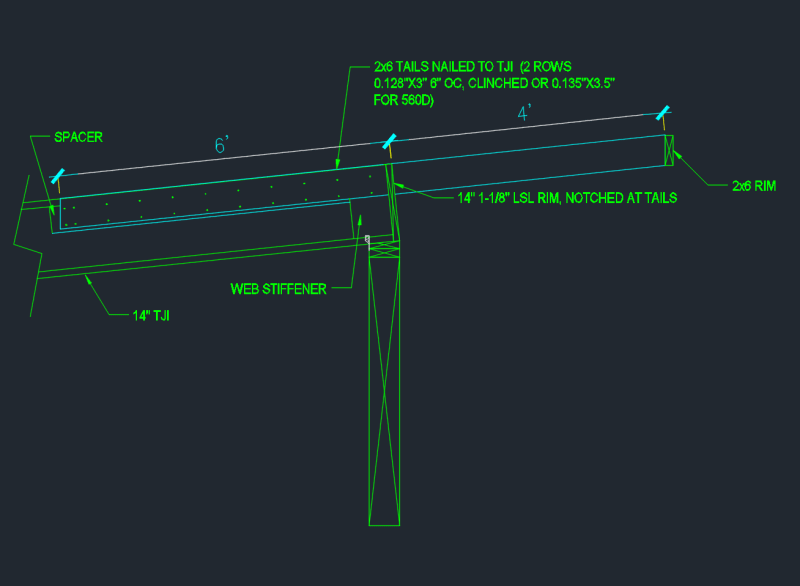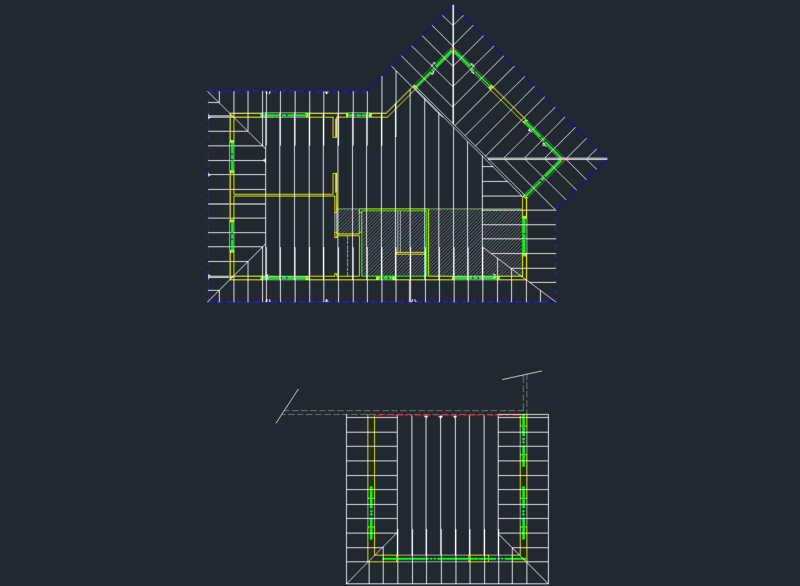Rich Zimmerman
Mechanical
I'm wondering if one of you could comment on my roof detail. I'm going for a shed-style roof with a 4' overhang that's really "thin" looking. So the main/interior roof is framed with 14" TJIs and then I've nailed a 2x6 on the side that cantilevers over to provide the overhang. Not really a huge deal except for two things 1. there's a section with a 7' wide floor to ceiling window and 2. I'd like to do rim board headers above other openings to maximize insulation in the wall. (those are really sort of the same issue).
So here's the details I've come up with:
Where there are no openings below, the TJI sits right on the top plate. There's a continuous 2x10 rim board with a 2x6 blocking above that. There's a 2x4 squash block that transfers the load from the cantilevered 2x6 to the wall. (I could have used the rim to support the 2x6 but I was worried that it would shrink differently than the TJI and cause problems)

When there's an opening below we add 1 or 2 2x10s and then a short joist hanger to support the TJI off the header. The cantilevered 2x6 rests right on the header and rim.

What do you guys think? Is there a better way to do this? (FYI slope of the roof is 1.25:12)
So here's the details I've come up with:
Where there are no openings below, the TJI sits right on the top plate. There's a continuous 2x10 rim board with a 2x6 blocking above that. There's a 2x4 squash block that transfers the load from the cantilevered 2x6 to the wall. (I could have used the rim to support the 2x6 but I was worried that it would shrink differently than the TJI and cause problems)

When there's an opening below we add 1 or 2 2x10s and then a short joist hanger to support the TJI off the header. The cantilevered 2x6 rests right on the header and rim.

What do you guys think? Is there a better way to do this? (FYI slope of the roof is 1.25:12)




